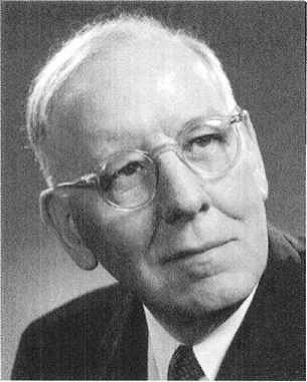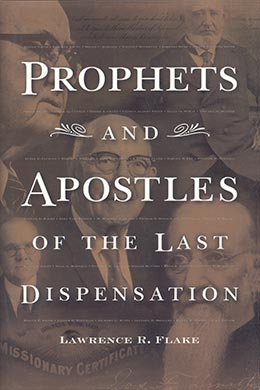George Quayle Morris
Lawrence R. Flake, Prophets and Apostles of the Last Dispensation (Provo, UT: Religious Studies Center, Brigham Young University, 2001), 501–3.

Born: 20 February 1874, Salt Lake City, Utah
Assistant to the Quorum of the Twelve: 6 October 1951
Quorum of the Twelve Apostles: 8 April 1954 (age 80)
Died: 23 April 1962 (age 88), Salt Lake City, Utah
A young boy with freezing hands stood knee-deep in snow, polishing a slab of marble. His father was Elias Morris, owner of a tile and monument company, and the boy was a future apostle of the Church, George Quayle Morris, named after his grandfather, George Q. Cannon. George learned to work hard at the task of polishing the hard stone surface until it took on the desired sheen. He would sometimes quote passages from Milton’s Paradise Lost to help shorten the tedious hours.
Elder Morris demonstrated the same persistence in his labors for the kingdom of God. He served for twenty-four years on the general board of the Young Men’s Mutual Improvement Association, both as an assistant superintendent and as general superintendent. Under his direction the Mutual Improvement Association flourished, cementing its relationship with the Scouting program and expanding the cultural events to include huge dance and music festivals involving thousands of young people. He also served as chairman of the Improvement Era committee and was instrumental in combining the magazine in 1929 with the Young Women’s Journal.
At age twenty-five, after completing his schooling at Brigham Young Academy and the University of Utah, George Q. Morris served a mission in the British Isles. In 1905 he married Emma Ramsey, a talented singer who had studied under the best musicians of Europe and had been called “Utah’s Nightingale” by President Theodore Roosevelt. Brother and Sister Morris became the parents of three daughters.
Following his mission, George returned to his father’s tile and monument business, becoming prosperous and well known in the Salt Lake area. He headed the committee responsible for erecting the beautiful “This Is the Place” Monument at the mouth of Emigration Canyon. Displaying great interest in the Utah pioneers, especially his own noble ancestors, he was a member of the Utah Trails and Landmarks Association and the American Trails Association of New York City. He took an interest in other civic organizations as well, furthering the endeavors of the Community Chest, Boy Scouts of America, and Salt Lake City Chamber of Commerce.
In 1948 Brother Morris was called to preside over the Eastern States Mission, a position he held in 1951 when he was made an Assistant to the Twelve. In April 1954, at the age of eighty, he became an apostle and served faithfully in that quorum until his death in 1962.
Elder Morris lived a dedicated life, making a great contribution to the youth of the Church and winning the love and respect of many. A member of the Young Men’s Mutual Improvement Association board described him as “a quiet, modest, reserved man, self-possessed, patient, eloquent in a subdued manner.” [1] President David O. McKay said at his death, “Our departed brother was one of those great, unselfish souls who forget themselves for others, and win immortality. . . . He was rich in inheritance, superior in achievement, indefatigable in service, true and devoted as a husband and father; faithful to every duty and appointment assigned to him; a true Latter-day Saint.” [2]
Notes
[1] Stringham A. Stevens, “George Quayle Morris: The New Superintendent of the Young Men’s Mutual Improvement Association,” Improvement Era, May 1937, 283.
[2] M. Elmer Christiansen, “George Q. Morris: 1874–1962,” Improvement Era, June 1962, 392; see also 470, 472–74.
